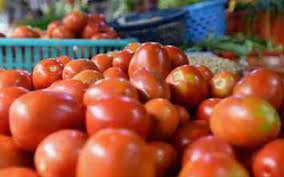
Tomato farmers in Maharashtra and Madhya Pradesh are facing severe losses as wholesale prices have plummeted by over 80% in the past two weeks, selling for as low as ₹8-10 per kg. The sharp decline follows record-high prices in 2023 and early 2024, highlighting the persistent volatility in perishable commodities.
Farmers Forced to Dump Produce Amid Losses
According to farmers, the cost of tomato production ranges between ₹12-14 per kg, making it unviable to sell at current market rates. Many have resorted to dumping their produce or using it as cattle feed, as transporting the harvest to mandis would only add to their losses.
“I grew tomatoes because prices were high last year. But since December, rates have been falling drastically. Now, it’s not even worth transporting my crop to the market. We have demanded compensation from the government,” said Santosh Mahle, a farmer and member of the Vashi Shetkari Sangathana.
Government Intervenes with Transport Subsidy
In response to the crisis, the Union agriculture ministry has activated the Market Intervention Scheme (MIS) to support farmers in states like Maharashtra, Madhya Pradesh, and Karnataka. Under this scheme, transportation costs for moving tomatoes from producing states to consuming states will be reimbursed to central agencies like NAFED and NCCF to ease the burden on farmers.
An agriculture ministry official stated, “Given the falling prices of tomatoes in major producing states, the government has decided to implement the transportation component under the MIS scheme to address the price disparity between producer and consumer states.”
Long-Term Challenges and Market Volatility
Experts argue that administrative measures like transport subsidies provide temporary relief but fail to address the underlying issue of price volatility in perishables. Siraj Hussain, former Union agriculture secretary, emphasized the need for long-term solutions such as investments in food processing, cold storage facilities, and technology to extend shelf life.
What Led to This Price Crash?
The current glut in tomato production is linked to the price surge in 2023, when tomato prices skyrocketed to ₹199 per kg in July, up from ₹30 in April. The price hike was triggered by poor monsoon rains and crop diseases during the 2022 kharif season, which reduced yields and led to increased demand for onions and potatoes. Encouraged by high returns, many farmers expanded tomato cultivation, resulting in the current oversupply and price collapse
Sources By Agencies

